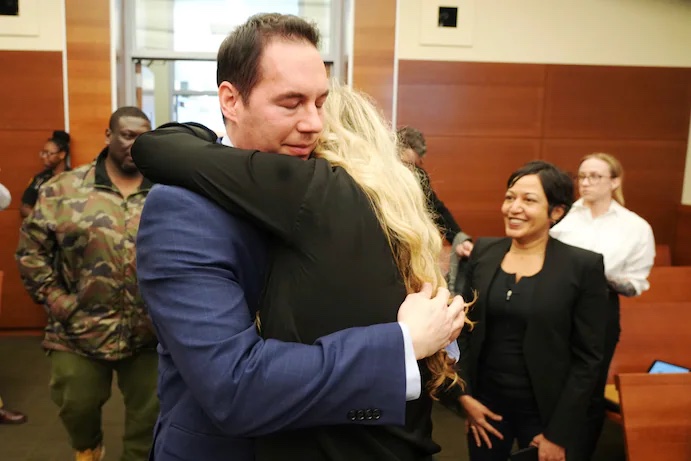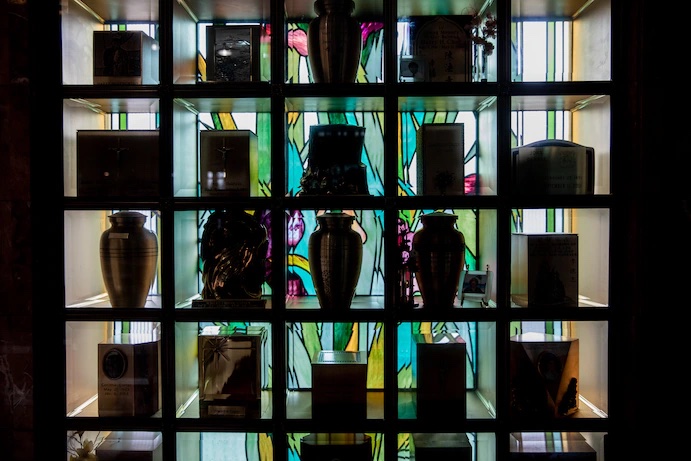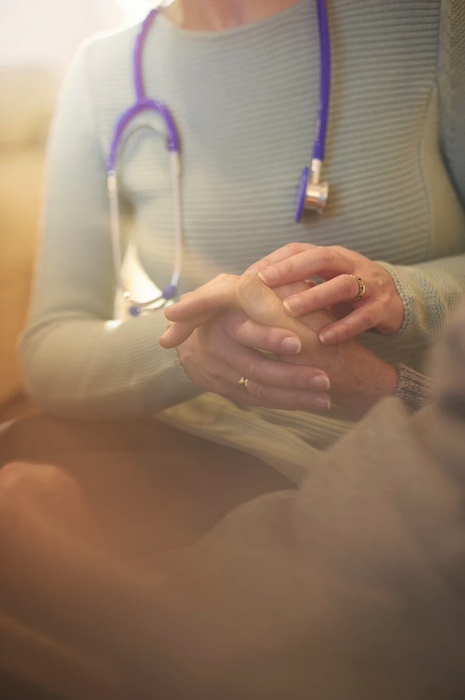The quest to save the planet doesn’t end when your life does.

Everybody’s going to die. That’s a fact of life. And there’s one thing everybody who dies has in common: We all got bodies. And when we die, something needs to happen with them. Most of the time, this involves cremating or embalming and burying — processes that tend to emit a lot of harmful chemicals into the atmosphere. But with our climate apocalypse creeping ever closer unless we change our ways, conventional funerary practices are no longer cutting it. Enter: the green funeral movement.
Many Americans have been trying to pursue green funerals for a while. Traditional embalming and bury-in-a-coffin approaches involve the use of about 20 million feet of wood, 4.3 million gallons of formaldehyde and other embalming fluids, 1.6 million tons of reinforced concrete, 17,000 tons of copper and bronze, and 64,500 tons of steel, according to the Green Burial Council. Cremations are increasingly popular, likely because they’re often billed as the more environmentally friendly option of after-death care, but it’s harmful in its own way: It’s estimated that cremations in the U.S. alone account for about 360,000 metric tons of carbon dioxide emissions every year.
If you look online for truly green funeral practices, you might see the more creative forms like eternal reefs or biodegradable burial pods. There are also companies like Return Home, which specializes in human composting, getting into the game. Return Home’s human composting method is a 50-day process that begins with the body being placed into a wooden cradle with organics like alfalfa and sawdust at the bottom. From there, the body is covered with more plant material and placed into a special HVAC system.
“The most important part of this [is] that we believe the body should not be altered at all,” Return Home CEO Micah Truman tells Mic. “By that we mean we don’t cut, grind, or separate at any point.” At most, Truman explains, Return Home sometimes has to reduce down the remaining bone at the end of 30 days to make for a suitable end product. But after that, he says, “We have soil that we give back to the families.”
In order to make a burial “green,” says Caitlyn Hauke, president of the Green Burial Council International, you just need “to not inhibit decomposition, allowing the body to go back to the earth naturally.”
That means a green burial can be as simple as ditching aspects of conventional burials that are bad for the environment. For example, each year, over 8,000 gallons of formaldehyde — one of the chemicals used in embalming — is put into the ground with dead bodies. But this chemical doesn’t stay inside of dead bodies forever; it leaks. Forgoing the embalming process can do a lot for sustainability.
Caskets themselves can be quite an issue, too. According to Milton Fields, the amount of casket wood buried each year is equivalent to about 4 million acres of forest. There’s also the use of concrete. As Carol Lilly, a professor of history and the director of international studies at the University of Nebraska at Kearney, tells Mic, “Many cemeteries insist on using concrete vaults for all burials because they help to prevent ground sinkage and thus serious maintenance problems.” But to produce just a single pound of concrete releases 0.93 pounds of carbon dioxide.
“Green burial” is a new term for an old practice.
Changing the funeral industry to be more sustainable might seem like a big undertaking. But the problems with conventional funerals are actually quite new. As Lilly explains, “Death rituals and funerary practices in the United States have changed dramatically over the past 200 years.”
And because funeral traditions vary widely between different faiths and groups, some communities’ death rituals are closer to being sustainable than others. “Funeral service is a highly segregated industry, both in terms of race and in terms of religion,” Truman, the CEO of Return Home, explains. “I’m Jewish, and there are Jewish funeral homes. There’s an African American funeral home downtown that builds a lot of community there. And that’s the way it’s always been.”
This separation isn’t necessarily bad. Sarah Chavez, the executive director of the Order of the Good Death, a death acceptance organization, tells Mic, “There are often so many small details that need to be adhered to [in funerals] … It can be a big comfort to know that your needs will be accommodated without having to teach someone what has to be done, and explain why it is so important.”
In looking at how death rituals vary, it’s important to remember that “green burial” is a new term for an old practice. “What we call green burial has always been practiced by people of Muslim and Jewish faiths because of their beliefs,” Chavez says. In Islam, it’s customary for bodies to be washed and shrouded, in a process known as ghusl. The bodies are then buried as quickly as possible either without a coffin (if local laws permit) or in a plain wooden one, which is biodegradable. Similarly, in Judaism, bodies are washed without embalming, wrapped in a plain shroud, and buried in a wooden casket without any metal or nails.
In the U.S., handling the dead used to be much more of a family affair. The phrase “funeral parlor” comes from visitations once being held in a family’s home “parlor” room, Lilly explains. It wasn’t until after the Civil War that embalming become hugely popular and funerals became professionalized. Death rituals — once deeply personal — were gobbled up by the new funeral industry.
“Although funeral home employees are largely well intended … Americans have become too far distanced from our deceased loved ones as a result, which may make the grieving process even more difficult,” Lilly tells Mic. “Death in American society during the 20th century became overly sanitized and often almost invisible.”
The U.S. has once again been taking up a cultural transition — this time towards green burials. In 2018, a survey by the National Funeral Directors Association found that nearly 54% of Americans are considering green burials, and 72% of cemeteries said they were seeing an increased demand, too.
“Our younger generations are teaching us how to die better.”
Since its launch in July 2020, Return Home has helped 45 families across various communities. Truman has found a bittersweet theme among his clients. “One of the most amazing things that’s happened to us is that young people are personally requesting it,” he shares. “It’s been unbelievable. Painful, but amazing. … We’re realizing that our younger generations are teaching us how to die better.”
But this shift in learning how to die better is about more than changing how people are buried. Overall, it’s a massive reexamination of how death is approached in the U.S. As Chavez says, it’s not just about “how these spaces can be used to care for the land, but each other — especially people from historically marginalized communities who are often not able to access the end-of-life options they desire.”
This can take shape in a number of ways. There can be community funds to help address funeral costs. Green burial practitioners can also do more to honor cultural differences, like accommodating ancestral rituals that need to be held at gravesites or holding ceremonies like Quinming, Obon, or Dia de los Muertos on funeral grounds. In the same vein, cemeteries can also respond to tragedies within their communities, rather than seeing themselves as a depoliticized site.
“Community altars are often created in response to deaths stemming from violence or police brutality,” Chavez says. These altars are often torn down by state officials in ways that can compound a community’s trauma. “Green burial grounds might consider creating a community altar or garden, providing an alternate space for collective mourning.”
Death itself isn’t evil. And while some might find it uncomfortable, neither is decomposition. At the end of the day, people are from the earth, and we’re meant to return to it. As Truman says, “It’s absolutely vital that we make sure the last thing we do on this planet is give back.”
Complete Article ↪HERE↩!








